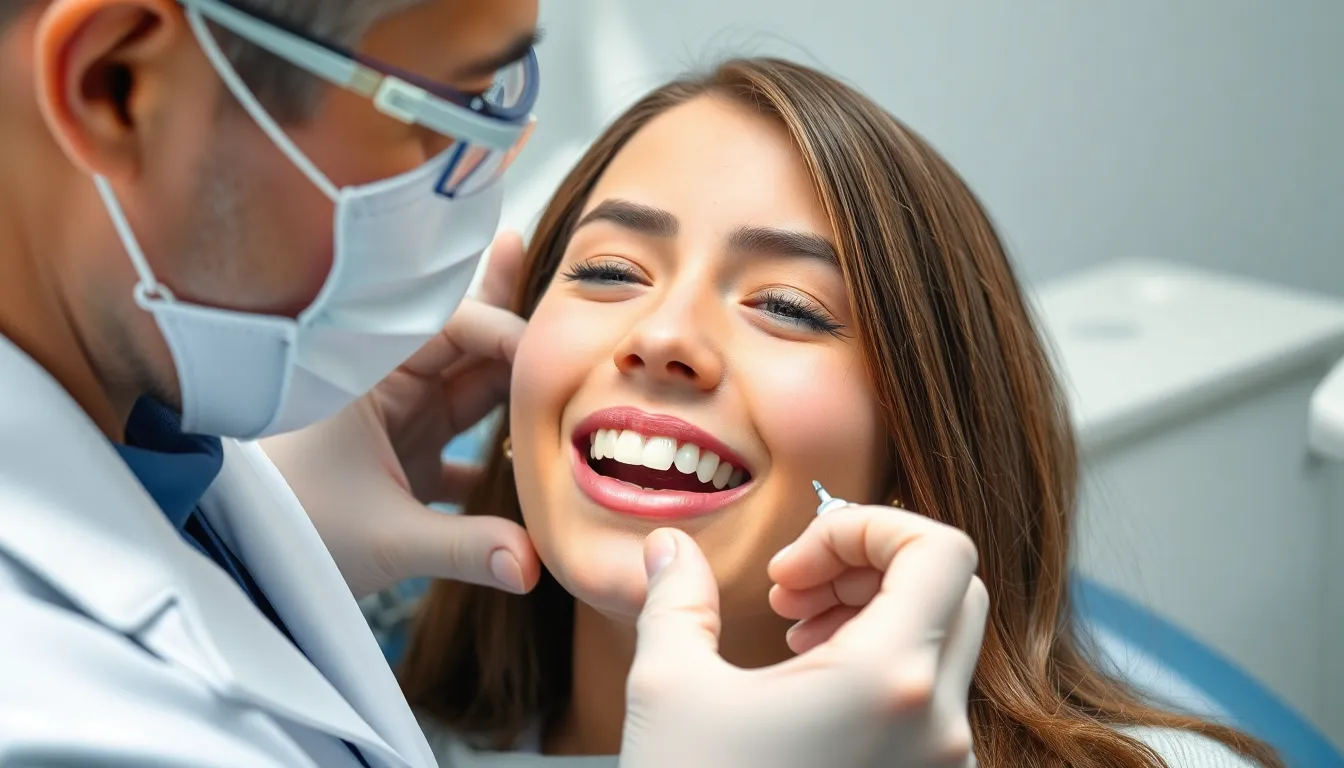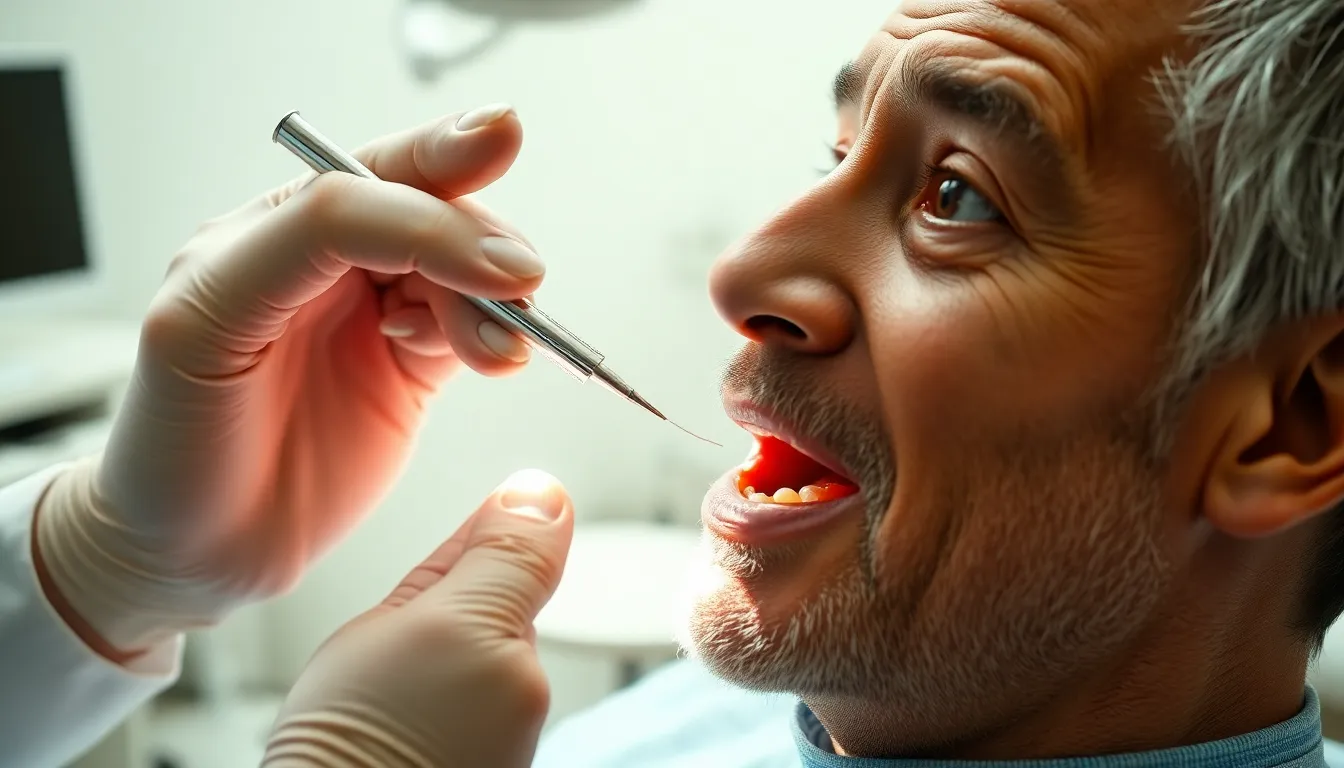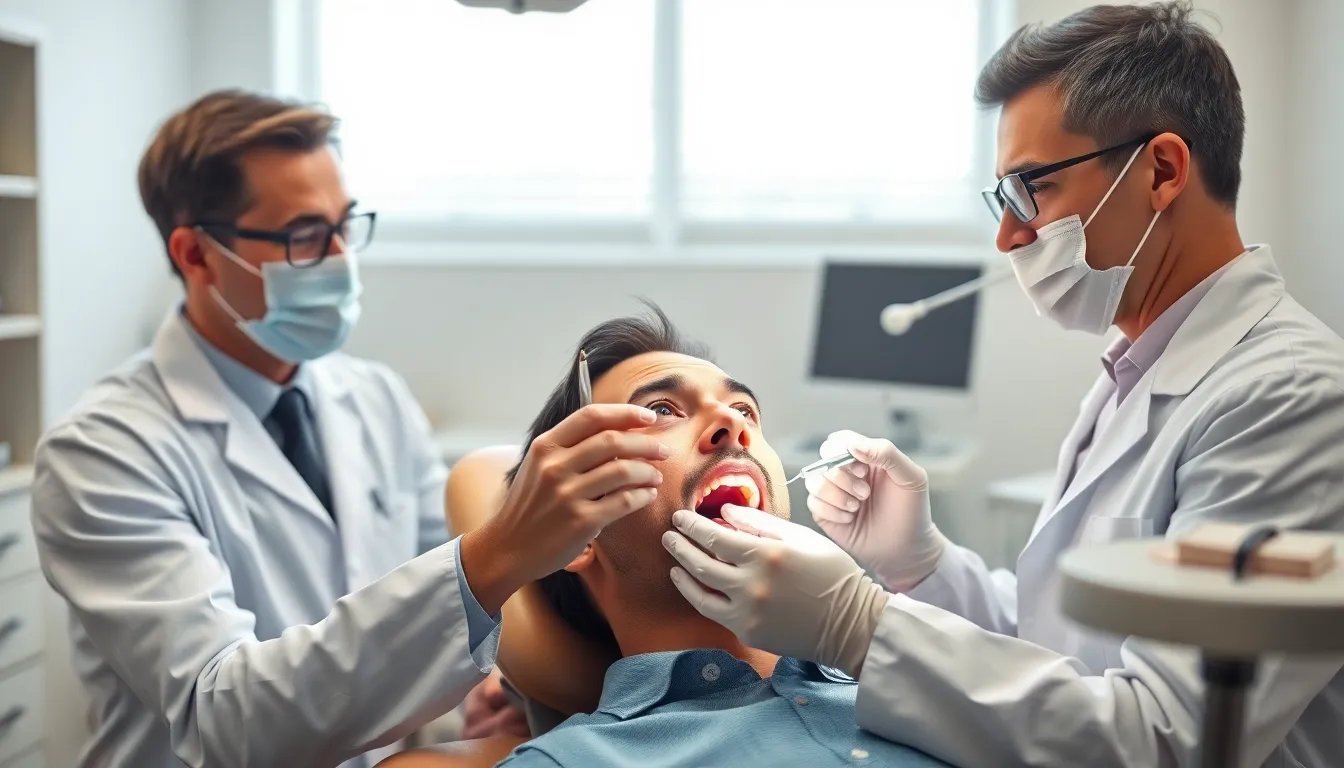Can braces fix a crooked jaw? It’s a question many people ask when they’re concerned about their facial symmetry or bite alignment. While traditional braces are well-known for straightening teeth, their capabilities extend beyond just perfecting your smile.
When you have a misaligned jaw, known as malocclusion, everyday activities like chewing or speaking can become uncomfortable. Depending on the severity of your jaw misalignment, braces might be part of the solution. Orthodontists use various techniques including braces, rubber bands, and sometimes additional appliances to gradually shift your jaw into proper alignment. But, severe cases may require more than just braces to achieve optimal results.
ChatGPT: Can braces fix a crooked jaw? If you’re struggling with jaw misalignment, you might be wondering if traditional orthodontic treatment holds the answer. The good news is that braces can indeed help correct certain types of jaw irregularities—but there’s more to the story you need to know.
A crooked jaw (malocclusion) affects not just your appearance but also your ability to chew, speak, and maintain proper oral health. Braces work by applying consistent pressure that gradually shifts both your teeth and jaw into proper alignment. For mild to moderate jaw misalignments, braces paired with elastics or other orthodontic appliances can produce remarkable improvements. But, severe skeletal discrepancies might require additional interventions beyond what braces alone can provide.
Understanding Jaw Misalignment: Types and Causes
Jaw misalignment occurs when the upper and lower jaws don’t properly align, creating functional and aesthetic concerns. This condition affects millions of Americans and can range from mild to severe, impacting everything from speech to eating comfort.
The Difference Between Dental and Skeletal Issues
Dental misalignment involves problems with tooth positioning within properly aligned jaws. Your teeth might be crowded, gapped, or improperly angled while your jaw structure remains anatomically correct. Orthodontic treatment with traditional braces or clear aligners typically resolves these issues by moving teeth into proper alignment.
Skeletal misalignment, conversely, stems from the jaw bones themselves being disproportionate or improperly positioned. Your upper jaw (maxilla) or lower jaw (mandible) might be too small, too large, or asymmetrical compared to each other. These structural disparities create bite problems that affect facial appearance and function. Patients with skeletal issues often require more comprehensive treatment approaches than dental misalignments alone.
Dr. Harris notes, “I’ve treated many patients who didn’t realize their jaw pain and headaches stemmed from skeletal misalignment rather than dental issues. Proper diagnosis makes all the difference in treatment outcomes.”
Common Causes of a Crooked Jaw
Genetic factors play a primary role in jaw misalignment development. Family history strongly influences jaw structure, with certain patterns of misalignment recurring across generations. Many patients inherit jaw proportions that create natural imbalances between the upper and lower dental arches.
Childhood habits significantly impact jaw development during critical growth periods. Prolonged thumb-sucking, pacifier use beyond age 3, and tongue thrusting create repetitive pressures that alter normal growth patterns. Mouth breathing due to allergies or enlarged adenoids forces children to position their jaws differently, potentially causing permanent changes.
Trauma to the face or jaw sometimes results in misalignment issues. Sports injuries, accidents, or falls affecting the jaw during developmental years can disrupt normal growth or cause asymmetrical healing. Even in adults, important facial trauma occasionally leads to permanent changes in jaw position or function.
Medical conditions like temporomandibular joint disorders (TMD) contribute to functional misalignment problems. These disorders affect how the jaw joints operate, creating pain, limited movement, and improper positioning during rest and function.
One memorable patient, Sarah, came to our office with severe headaches that had persisted for years even though medication. Examination revealed important jaw misalignment from childhood thumb-sucking that continued until age 12. Through comprehensive orthodontic treatment addressing both her dental and skeletal components, Sarah experienced complete resolution of her chronic headaches within six months.
Can Braces Fix a Crooked Jaw?
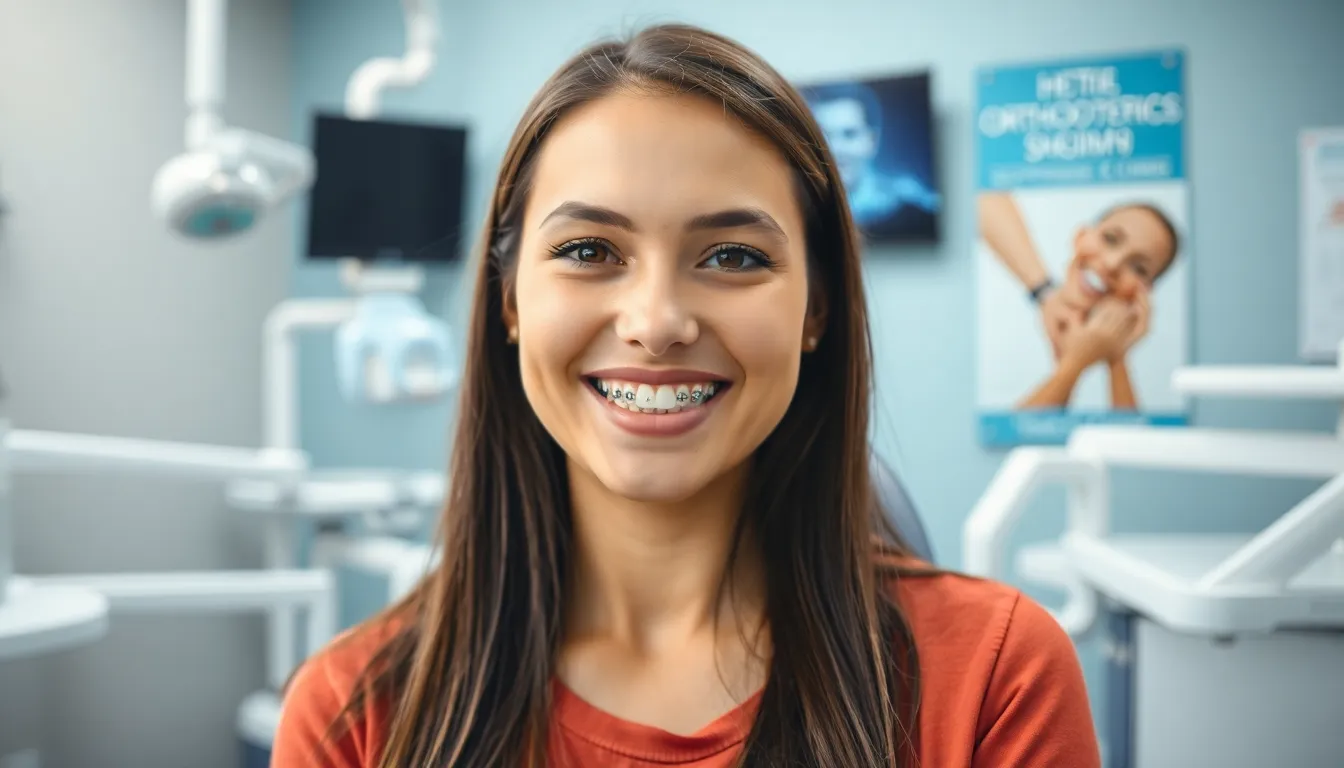
Braces can effectively correct a crooked jaw in many cases, particularly when the misalignment is mild to moderate. Their effectiveness depends on the exact nature and severity of your jaw misalignment, with different approaches needed for different conditions.
How Braces Work to Correct Alignment
Braces apply consistent, gentle pressure on your teeth and indirectly on your jawbones, gradually shifting them into proper alignment. This steady pressure helps improve the positioning of your jaws and overall bite mechanics. For mild to moderate jaw misalignments, braces alone often produce important improvements by influencing both the posture and function of your jaw. The correction process enhances several aspects of oral function including chewing efficiency, speech clarity, and reduces abnormal wear patterns on your teeth. Many patients experience not only aesthetic improvements but also functional benefits as their jaw alignment normalizes through orthodontic treatment.
Dr. Harris notes, “I’ve seen remarkable improvements in patients with moderate jaw misalignments using just traditional braces. The key is applying the right amount of pressure in the correct direction to guide both teeth and jaw into harmony.”
Limitations of Braces for Jaw Correction
Braces have exact limitations when addressing severe jaw alignment issues. In pronounced jaw discrepancies, orthodontic treatment alone typically falls short of achieving optimal results. These severe cases often require a combination approach—braces working together with orthognathic (jaw) surgery to achieve proper alignment and function. Braces primarily affect tooth position, with their influence on jawbones limited to certain degrees of flexibility within the jaw structure. Skeletal misalignments that stem from important bone structure issues rather than tooth positioning typically require more intensive intervention.
Treatment Options for Different Jaw Misalignments
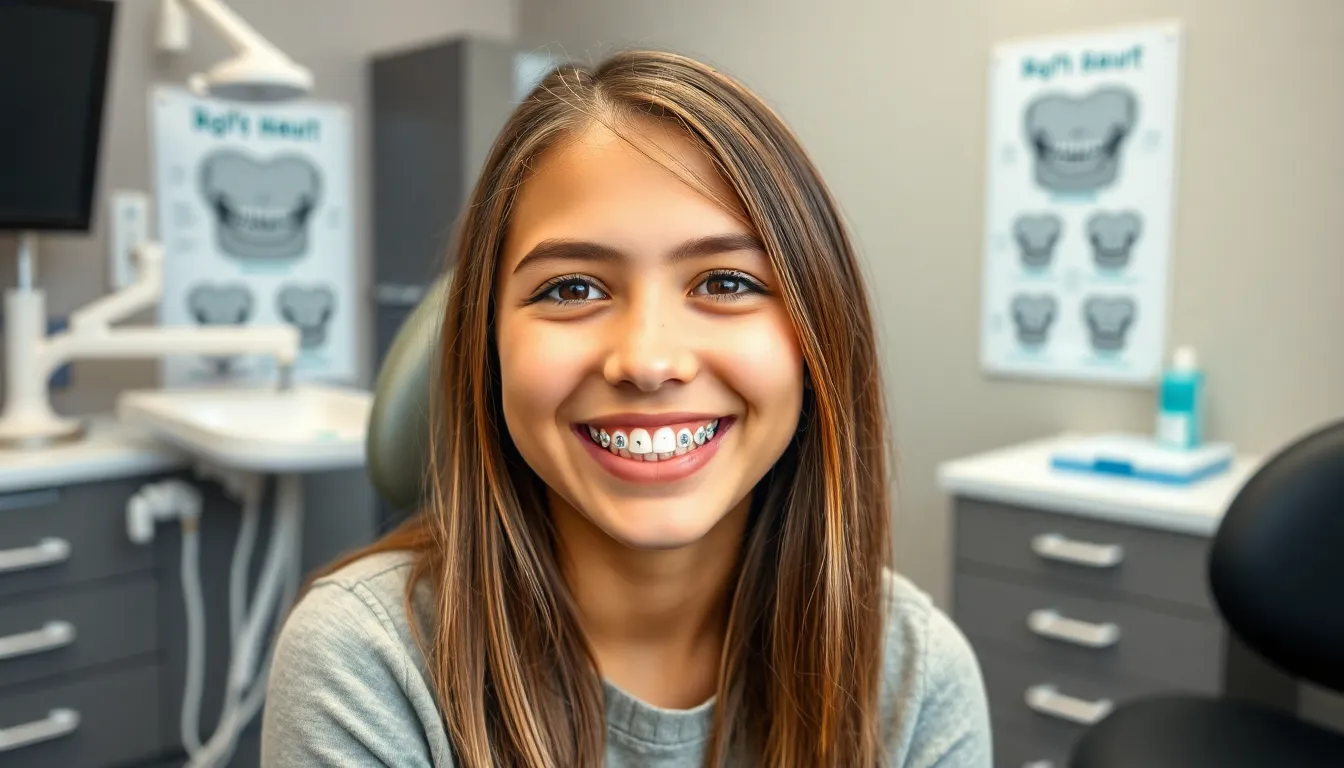
Treatment options for jaw misalignments vary depending on the severity and exact type of the condition. Your orthodontist will recommend an approach customized to your unique situation after a comprehensive evaluation.
Mild to Moderate Misalignments
Braces alone often effectively correct mild to moderate jaw misalignments. They apply consistent pressure on your teeth, gradually shifting them into proper alignment while simultaneously improving jaw positioning. This continuous force helps remodel the surrounding bone structure, resulting in a better bite and more balanced facial symmetry.
“Many of my patients with moderate jaw issues experience important improvement with standard braces treatment,” explains Dr. Todd B. Harris. “For instance, Emily, a 14-year-old patient with a mild underbite, saw her jaw alignment normalize after 18 months of traditional braces without needing additional interventions.”
Traditional metal braces, ceramic braces, and even clear aligners can be used for these cases, with treatment typically lasting 18-24 months depending on individual needs.
Braces Combined With Other Orthodontic Appliances
Orthodontic appliances paired with braces create a comprehensive approach for treating more complex jaw misalignments. These specialized devices work alongside braces to exert precise forces on the jawbone and surrounding tissues, effectively reshaping or repositioning the jaws.
Common supplementary appliances include:
- Palatal expanders that widen the upper jaw to correct crossbites
- Headgear that directs growth of the upper or lower jaw
- Herbst appliances that encourage proper lower jaw development
- Elastics (rubber bands) that improve bite alignment between upper and lower teeth
These combination treatments prove particularly effective for growing children and adolescents whose jawbones remain malleable. Dr. Harris notes, “I’ve seen remarkable transformations in patients like 12-year-old Jason, who had a important overbite corrected using braces with headgear—the change in both his bite function and confidence was extraordinary.”
Cases Where Surgery May Be Necessary
Orthognathic surgery becomes the recommended option for severe jaw misalignments that braces and orthodontic appliances alone cannot correct. This surgical intervention physically repositions the jawbones to achieve proper alignment, with braces used both before and after surgery to ensure optimal teeth positioning.
Surgery typically becomes necessary in these situations:
- Adult patients whose jaw growth is complete
- Severe skeletal discrepancies causing important functional problems
- Cases with extreme facial asymmetry affecting quality of life
- Patients with sleep apnea related to jaw position
A collaborative approach between your orthodontist and an oral surgeon ensures comprehensive care throughout this process. Treatment typically involves wearing braces for 12-18 months before surgery to align the teeth properly, followed by the surgical procedure and an additional 6-12 months of orthodontic treatment.
The Treatment Timeline for Jaw Correction

Jaw correction with braces follows a predictable timeline that varies based on the severity of misalignment. Understanding each phase helps set realistic expectations for your orthodontic journey.
Initial Phase (Months 1-6)
The initial phase marks the beginning of noticeable changes in your dental structure. Teeth gradually start shifting into their new positions during this period, with bite adjustments commencing simultaneously. You’ll likely notice minor jaw alignment changes as your teeth begin to move, creating a foundation for more important corrections later. Dr. Harris explains that patients often report feeling their bite “shifting” during this early stage, though the visual changes might be subtle.
Middle Phase (Months 6-18)
During the middle phase, continued tooth movement leads to substantial improvements in your bite alignment. The effects on jaw repositioning become increasingly evident as teeth shift into proper alignment. Many patients experience the most dramatic visual changes during this period, with facial symmetry gradually improving. Sarah, a 24-year-old patient, noted: “Around month 8, I started seeing actual changes in how my jawline looked in photos—it was much more balanced than before.”
Final Phase (Months 18-24+)
The final phase brings your teeth and bite into optimal alignment, completing the jaw correction process. Your orthodontist will likely introduce retention devices to maintain the correction achieved through months of treatment. Treatment length varies significantly based on individual cases, particularly the complexity of jaw issues and your age when starting treatment. Adolescent patients typically see faster results due to their developing jaw structure, while adults may require extended treatment timeframes.
Age Considerations for Jaw Alignment Treatment
Age plays a crucial role in the effectiveness of jaw alignment correction. Children and adolescents respond more favorably to orthodontic intervention because their jaws are still growing and developing. This growth period creates an optimal window for guiding jaw development using braces and other orthodontic appliances. The malleable nature of developing bone structure allows orthodontists to achieve more dramatic corrections without surgical intervention.
Adults can still benefit significantly from braces for jaw alignment issues, with many patients experiencing remarkable improvements in both function and appearance. But, adult jawbone remodeling happens more slowly and with greater limitations. Severe jaw discrepancies in adults often require a combination of orthodontic treatment and orthognathic surgery to achieve optimal results, as the jawbone has completed its growth phase and resists important restructuring through braces alone.
What to Expect During the Correction Process
The jaw correction journey begins with an initial consultation where your orthodontist evaluates your dental and jaw structure using comprehensive X-rays and dental impressions. This diagnostic phase helps create a customized treatment plan addressing your exact alignment issues. Next comes the placement of fixed braces or clear aligners designed to gradually move teeth into proper positions, indirectly affecting jaw alignment.
Regular adjustment appointments occur every 4-8 weeks throughout your treatment. These visits allow your orthodontist to monitor progress and make necessary modifications to your treatment plan. Mild discomfort or soreness typically follows adjustment appointments as your teeth and jaw respond to new pressure points. Patients commonly experience improved bite function, enhanced chewing ability, speech improvements, and increased facial symmetry as treatment progresses.
Long-Term Results and Maintenance

The success of braces in fixing jaw alignment and bite issues can be long-lasting with proper aftercare. Patients typically see harmonious bite alignment and balanced facial features develop gradually over months to years of treatment.
Retainers and Post-Treatment Care
Retainers play a crucial role in maintaining your newly aligned teeth and jaw position after braces are removed. These devices help stabilize teeth in their correct positions and prevent them from shifting back to their original misaligned state. Most orthodontists recommend wearing retainers full-time initially—usually for 3-6 months—before transitioning to nighttime wear for extended maintenance. Custom-fitted retainers ensure maximum comfort and effectiveness while preserving your investment in orthodontic treatment.
Dr. Todd B. Harris explains, “I’ve seen countless patients maintain perfect alignment for decades simply by being consistent with their retainer use. The retention phase is just as important as the active treatment phase.”
Regular follow-up appointments with your orthodontist allow for monitoring of your jaw alignment and making minor adjustments if necessary. These check-ups typically occur every 6-12 months after braces removal and ensure any small shifts are addressed before they become problematic.
Potential Relapse Issues
Without consistent retainer use, teeth and jaws may experience relapse—returning to their previous misaligned positions. The risk of relapse is significantly higher in cases with severe malocclusions and important jaw misalignment. Patients with crossbites, severe overbites, or underbites face greater challenges in maintaining their corrected jaw position without proper retention.
Emma, a patient who underwent treatment for a severe underbite, shares her experience: “I stopped wearing my retainer regularly after the first year and noticed my jaw starting to shift back within months. Fortunately, my orthodontist caught it early and we corrected it with a short period of nighttime elastics rather than needing braces again.”
Factors that contribute to relapse include natural aging processes, continued growth in younger patients, and persistent habits like tongue thrusting or mouth breathing. Occasionally, minor orthodontic adjustments may be required years after the initial treatment to maintain optimal jaw and bite alignment. Some patients benefit from permanent retainers—thin wires bonded to the back of front teeth—that provide continuous protection against relapse without requiring patient compliance.
Conclusion
Braces offer an effective solution for many jaw misalignment issues with the potential to transform both your smile and overall oral function. Your treatment journey will be unique based on the severity of your condition age and exact needs.
Remember that while braces alone work well for mild to moderate cases severe misalignments may require additional interventions like orthognathic surgery. The key to success lies in comprehensive evaluation proper treatment planning and diligent follow-up care including consistent retainer use.
Whether you’re seeking treatment for aesthetic reasons or to address functional problems consulting with an orthodontist will help determine if braces are the right solution for your crooked jaw. With modern orthodontic techniques you can look forward to improved facial symmetry better oral function and enhanced confidence.
Frequently Asked Questions
Can braces fix a crooked jaw?
Yes, braces can help correct a crooked jaw, especially for mild to moderate misalignments. They work by applying gentle pressure on teeth and indirectly on jawbones, gradually shifting them into proper alignment. For severe jaw misalignments, braces may need to be combined with additional treatments like orthodontic appliances or surgery for optimal results.
What causes a crooked jaw?
A crooked jaw can result from genetic factors, childhood habits like thumb-sucking, facial trauma, or medical conditions such as temporomandibular joint disorders (TMD). The misalignment occurs when upper and lower jaws don’t align properly, which can affect both function and appearance. Some cases involve dental misalignment (tooth positioning), while others involve skeletal misalignment (jaw bone structure).
How long does jaw correction with braces take?
Jaw correction with braces typically takes 18-24 months, depending on misalignment severity. The process occurs in phases: initial changes in dental structure (months 1-6), substantial improvements in bite alignment (months 6-18), and final adjustments for optimal alignment (months 18-24+). Treatment time may be longer for adults or those with severe misalignments.
Is jaw correction more effective in children or adults?
Jaw correction is generally more effective in children and adolescents because their jaws are still developing. Young patients often respond better to treatment and may avoid the need for surgery. Adults can still benefit from braces but may require longer treatment times and, for severe cases, might need a combination of orthodontic treatment and surgery for optimal results.
What happens after braces are removed?
After braces are removed, retainers are essential to maintain the newly aligned teeth and jaw position. Initially, orthodontists recommend full-time retainer wear, gradually transitioning to nighttime use. Regular follow-up appointments are necessary to monitor alignment and make adjustments. Without proper retainer use, teeth and jaws may shift back toward their original positions (relapse).
Can braces alone fix severe jaw misalignments?
No, braces alone typically cannot fix severe jaw misalignments, particularly skeletal issues. While braces are effective for mild to moderate cases, severe misalignments often require a combination approach. This might include orthodontic appliances alongside braces or orthognathic surgery to physically reposition the jawbones, with braces used before and after surgery to ensure optimal alignment.
How do orthodontists determine the right treatment for jaw misalignment?
Orthodontists determine treatment through comprehensive evaluation including clinical examination, dental impressions, X-rays, and 3D imaging. They assess whether the issue is dental or skeletal, the severity of misalignment, patient age, and growth potential. This diagnostic phase helps create a personalized treatment plan that may include braces, additional appliances, or referral for surgical consultation if needed.
Will jaw correction with braces improve other oral functions?
Yes, successful jaw correction with braces typically improves several oral functions including chewing efficiency, speech clarity, and reduces abnormal wear on teeth. Many patients also experience relief from symptoms like headaches, jaw pain, and TMJ discomfort. Beyond functional improvements, treatment often enhances facial symmetry and aesthetic appearance.


